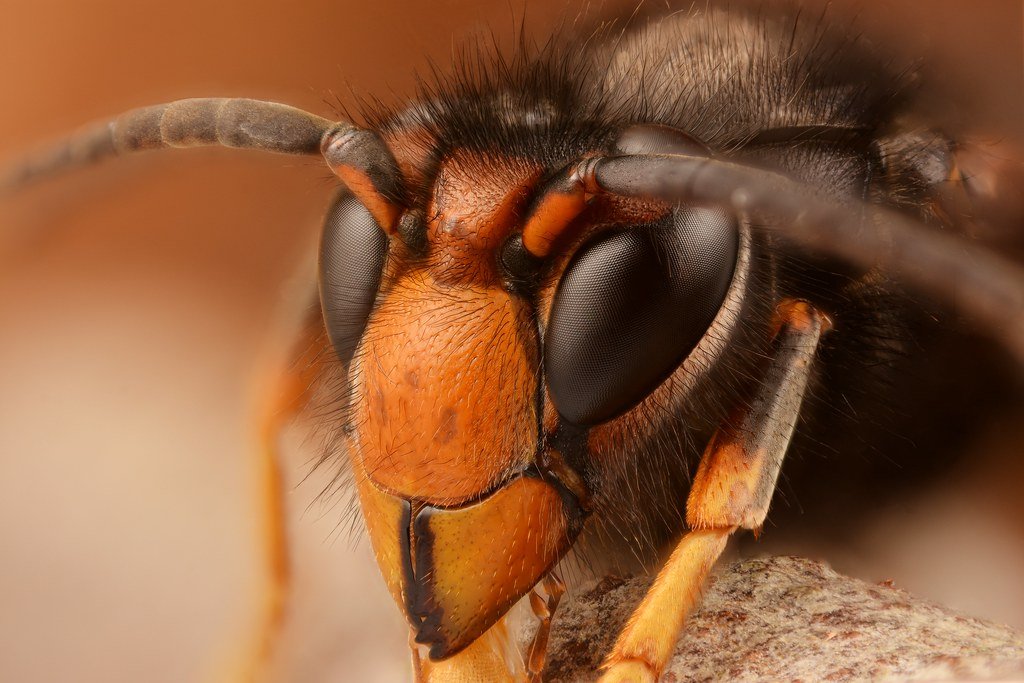
I wrote in West Country Voices that bees are in trouble in the UK (they are in trouble in most parts of the world: apart from honeybees, most species are dropping in numbers); but one of the most urgent threats is not yet widely known about.
It comes from Asian hornets, which kill – amongst other things – our honeybees.
They have been found to limit development of honeybee colonies through “persistent predation of adult bees”. The government was so concerned about this threat a few years ago that a nationwide network of Asian Hornet Teams was set up, with trained ‘monitors’ tasked with checking reports of possible sightings, and initiating action to try to prevent the hornets from spreading into other areas.
They are right to be concerned: an Asian hornet colony can produce 6000 new individuals in one season. These insects are also capable of surviving difficult conditions and of travelling over long distances. Indigenous to China and many other Asian countries, they arrived in south-western France in 2004 – it’s thought in a consignment of pottery from China – and within the following three years they spread over an area of 120000 km². They are now found widely across most of western Europe. It was probably only a matter of time before they arrived in Britain.
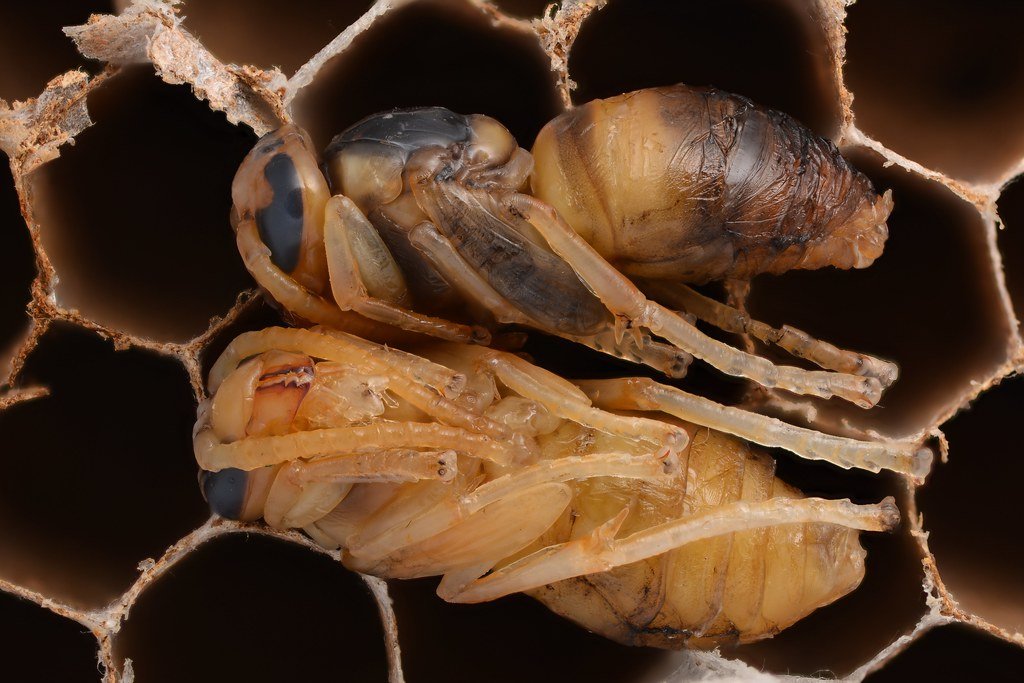
The first known sightings here were on the same day in 2016: active hornets were seen in Tetbury (in Gloucestershire) and a single, dead, one found in north Somerset; experts were sent to Tetbury to try to find the nest, which took ten days, but vigilance and sheer persistence paid off and it was eventually found and destroyed.
Then in 2017 a beekeeper in Woolacombe in north Devon saw Asian hornets hunting in his apiary. He immediately reported it and, again, a nest was discovered and destroyed. Since then, in the West Country Voices area there have been sightings – of single insects and nests – in Fowey, Liskeard and Christchurch. It seems some of these insects may have been unwittingly brought here by people travelling back to the UK from France, but in one case a knowledgeable beekeeper spotted a single insect – almost unbelievably – actually crossing the Channel on a ferry.
Whilst the population levels of Asian hornets are quite low in Asia (probably because of competition with other species over food resources), they are now much higher in Europe, particularly in France where 23 nests per km² have been reported in urban areas. Two brothers – appropriately named Bize – who left their former jobs to set up a pest control business, destroyed 300 Asian hornet nests in one area of the Parisian suburbs in 2019 alone. Given that each nest can contain hundreds of queens who will then leave the nest to start new colonies, this work is vital.
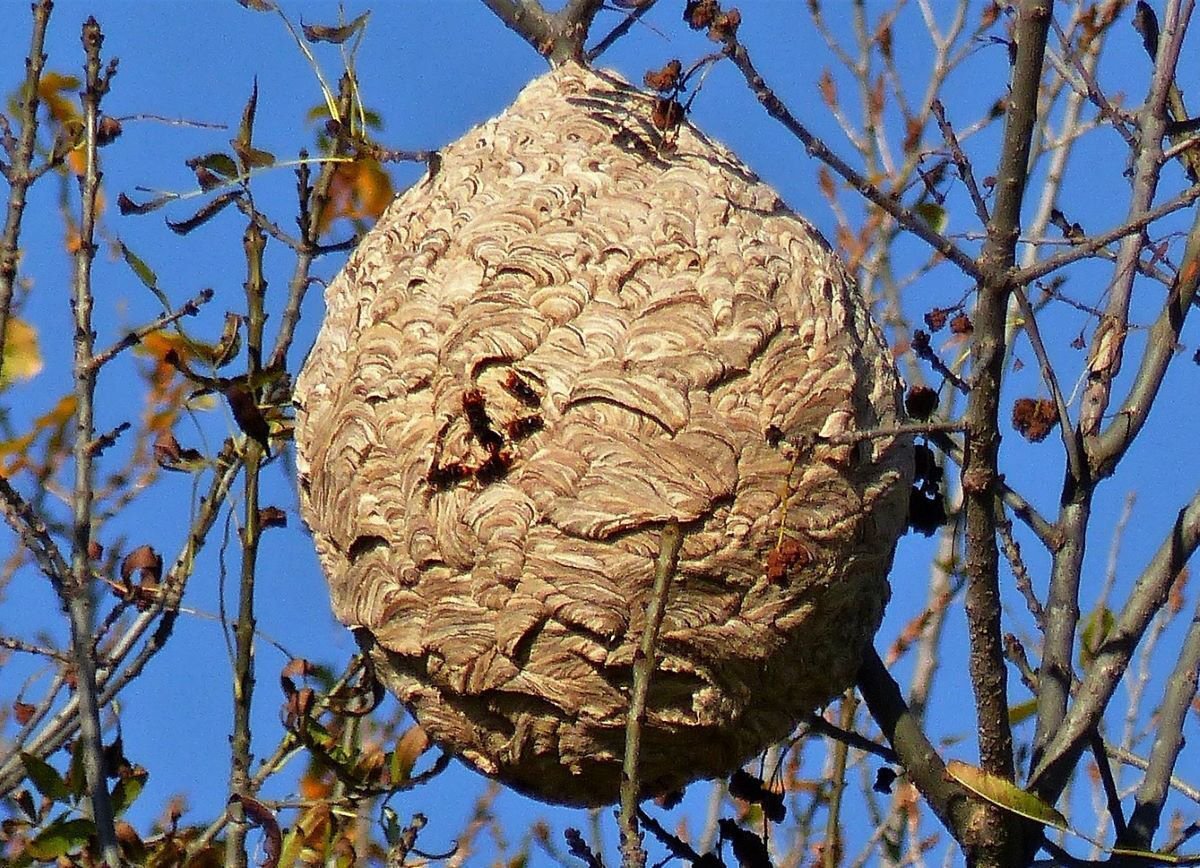
The hornets have caused untold damage, despite (or maybe because of) a huge increase in beekeeping: it is now so popular in Paris that there are some 700 beehives dotted around the city (including on the roof of Notre Dame Cathedral, where the colonies survived the devastating fire in 2019). Owing to the interest in beekeeping, the threat from Asian hornets is taken very seriously and local media regularly carry reports and warnings about local sightings.
Although there is some hysteria in the more excitable print media here, Asian hornets (unless provoked) don’t really present a huge danger to humans except to those who are severely allergic to bee or wasp stings and you can be stung through a bee suit! However, owing to the threat they pose to our honeybee population (and all pollinators), it is very important that all possible effort is made to prevent them from establishing a foothold here.
So what do they look like?
Asian hornets (Vespa velutina) are smaller, at 25-30mm, than the more common European hornet, but they are quite different in colour. They have dark, almost black, bodies with one yellow band towards the tail; their legs are predominantly yellow and when seen ‘head on’, their faces are orange, with reddish-brown eyes.
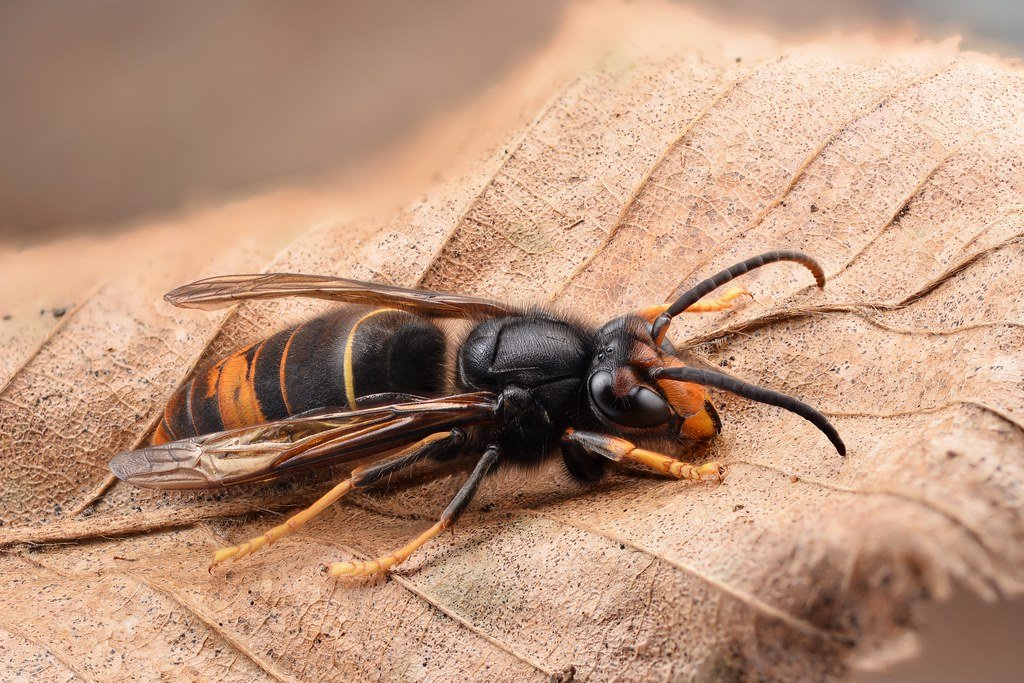
They are usually seen from February onwards and their numbers can increase dramatically as the season progresses. They make a ‘primary’ nest, usually in a shed or similar place, and when the colony outgrows this, they go on to make a secondary nest, very often in a tree (though they are now said to regard any location as a potential home, including holes in the ground). As the year progresses, their attacks on honeybees become more frequent and reach a peak in the autumn. They are fast, agile creatures and unlike most other hornets they are so adept at catching bees on the wing that they are able to hover in front of the hive (this is called ‘hawking’) to catch forager bees.
The adult hornets don’t eat the bees themselves: intact bees are either taken back to the nest immediately, or more usually, only the flight muscle is retained, made into a kind of ‘meatball’, and fed to the larvae back in the nest. The adults feed on ripe fruit, nectar and tree sap.
They have few natural predators, and those species which do prey on them – such as green woodpeckers and jays – are not able to catch enough to make any real impact on the hornet numbers. ‘Specialist’ predators like honey buzzards and bee-eaters have themselves become so rare that they are considered to have a negligible impact.
What should you do, if you think you have seen an Asian hornet?
Firstly, try to get a photo of it (without putting yourself at any risk). Then report it: you need to be able to identify the location. There are now free apps for both Android and iPhone; or you can complete the online form from the Non-Native Species Secretariat (NNSS) or send an email to alertnonnative@ceh.ac.uk. If you aren’t sure whether what you’ve seen is an Asian hornet, a native European hornet, or perhaps not even a hornet at all, you can find out more, both from the apps, or from factsheets.
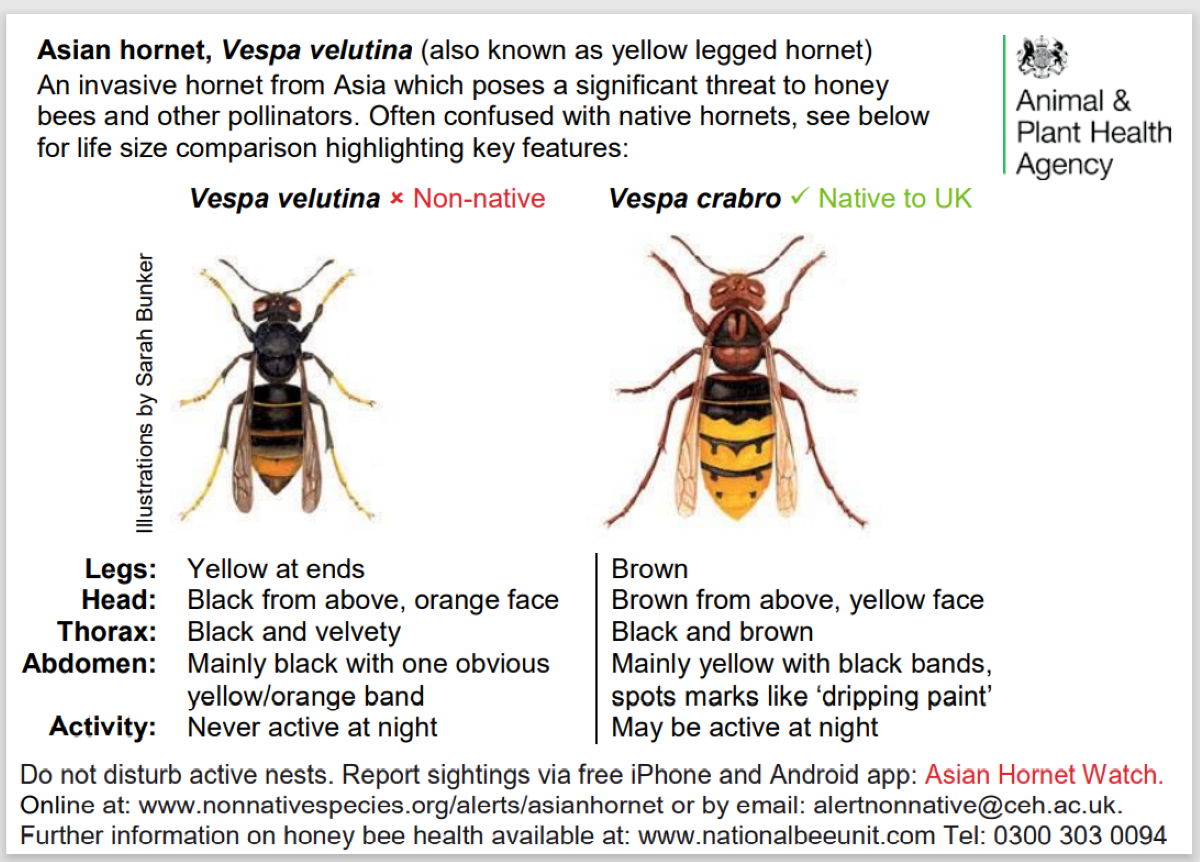
If you keep bees yourself, you will almost certainly already have signed up to “BeeBase”, where there is more information and advice on how to deal with the threat from the hornet.
Our bees and other beneficial insects are already struggling: please help keep the Asian hornet at bay.




